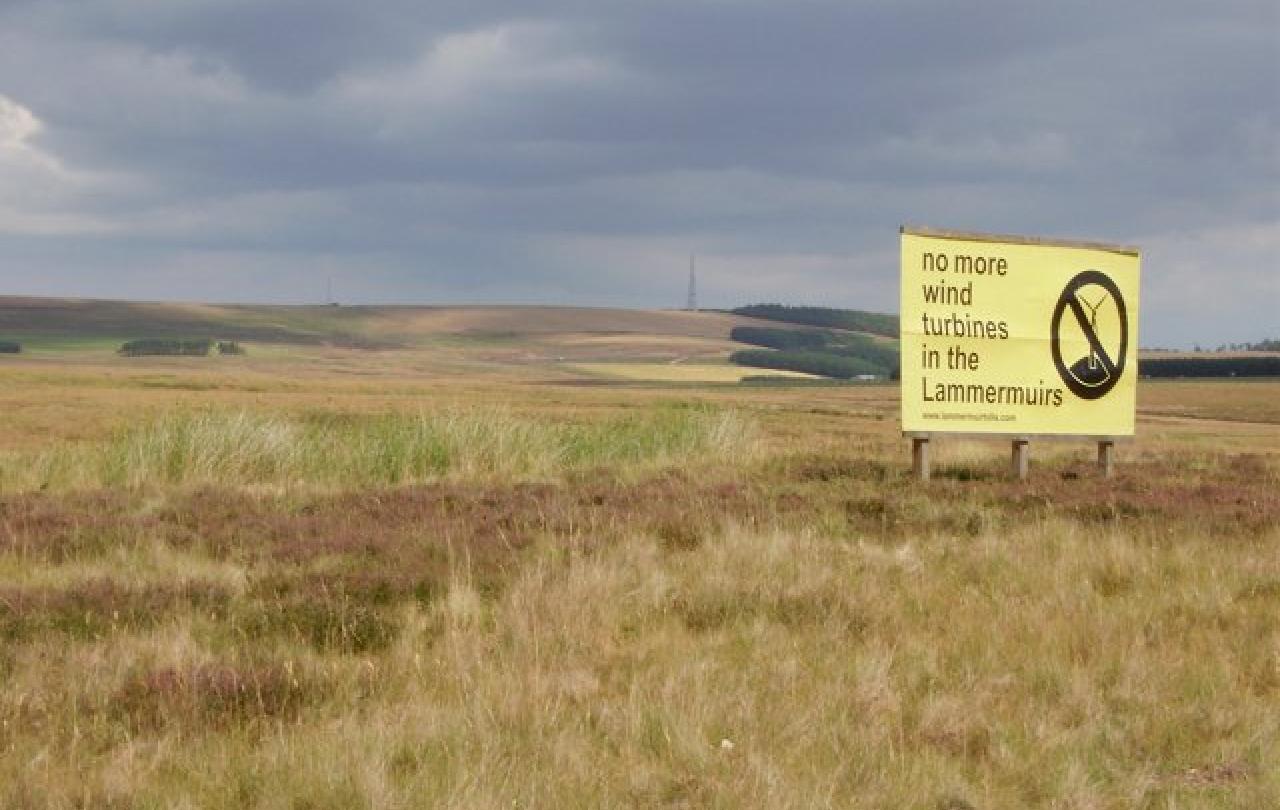
It was easy to forget the fury of the past few winters in the gentle light of the golden autumn which enveloped our corner of rural Aberdeenshire over the past month. The scars Storm Arwen tore through the landscape three years ago, toppling whole hillsides of trees, and the flood-soaked fields of last winter were hard to conjure when faced with the thousand colours that painted the landscape. The smoky green of pine forests in twilight, the shocking scarlet of apples my daughters picked from our neighbour’s tree, the little violet fireworks of elderberry clusters hanging above the path to our house, these chased away worries about the future and the past and demanding attention to the present. Amid this array, it was easy to see why Queen Victoria chose our corner of Scotland for her rural retreat over a century and a half ago. The changing of the season has something of the eternal, sacred, and inviolable in it. “Let the field be joyful and all that is therein; then shall all the trees of the wood rejoice,” sang the ancient Psalmist. Surely, if ever a land was obedient to this command, it was our valley’s, this October. Surely too, it is our duty to preserve it so that it can sing out for a thousand more such autumns?
This drive to preserve is evident in the signs that appear regularly on fences as you drive through our valley. “STOP MONSTER PYLONS” and “NO WINDFARM ON HILL OF FARE” they say in capital letters large enough to communicate their creators’ anger. Our valley, which connects the Highlands to the sea, is prime real estate for the sorts of development necessary to transform the UK economy, which still gets 77 per cent of its energy from burning fossil fuels, into one built on renewable energy. Our hills are ideal for turbines and our land must be crossed if transmission lines are to carry electricity from wind farms in the north to population centres like Edinburgh, Glasgow, Manchester, and London. To many of my neighbours this sort of construction amounts to an industrialisation of the countryside, an irreversible scarring of pristine land in service of interests far away which care little for them. This view is common enough that almost all of the local village councils have expressed opposition to the developments. When my neighbours are characterised by senior government ministers as “the blockers, the delayers, the obstructionists”, I suspect it only hardens their resolve.
It is not hard to imagine Adam the gardener or Abel the shepherd attending to their land and animals with similar care to that of my neighbours.
Sometimes I wonder if what politicians have in mind when they think of my neighbours are the sorts of toffs featured in Rivals for whom the countryside is a playground of upper-class indulgence. I am not rich. Neither are most of my immediate neighbours, many of whom rely on waiting tables at the local farm shop or cleaning holiday lets to make ends meet. My understanding is that most of the local farmers consider themselves lucky if they turn any profit at all from their long and exhausting hours. Every year we wonder if there will be enough pupils to keep our local primary school open. Every winter we prepare for the inevitable interruptions caused by power cuts, school closures, and unplowed roads.
If I had to guess at what keeps my neighbours here it is the land itself, watching and admiring it, caring for it, aligning the rhythms of their life to it. Autumn can be wonderful, but so too is spring. I drive to work past newborn lambs trying out their stilt-like legs, anticipate the sudden return of house martins to their nests under our eves, and enjoy weekend walks up the hillsides amid the sun-yellow mazes of coconut-scented gorse bushes. Each season land presents itself to us, demands our attention, calls for our admiration.
In the two creation stories of Genesis, what it is to be human is to be made in the image of God and to be given the task of tilling and keeping the land, respectively. A way of reading these together is that humans are to be priests to creation, recognising and praising its beauty and caring for it in a way which reflects God’s love for it. In my last article for Seen & Unseen, I discussed philosopher Alasdair MacIntyre’s concept of practices and how the human activities he identifies as practices can order and give meaning to our lives and communities. Another way of thinking about these practices is that they are all, in some way, an expression of this original edenic imperative, to see, to respond to, and to care for God’s creation. If this is true of any practice, it is perhaps most transparent in rural ones. It is not hard to imagine Adam the gardener or Abel the shepherd attending to their land and animals with similar care to that of my neighbours.
The practices we engage in have a way of becoming enmeshed with our identity in such a manner that it can be hard to imagine ourselves without them. That is why, I believe, opposition to wind farms and pylons runs so deep here, and why, as geographer Patrick Devine-Wright has demonstrated, attempts to offset the financial downsides of developments through local grant programmes and other compensation do very little to swing public opinion in favour of development. As he demonstrates, at the root of such opposition is an affective attachment to the land, one that money cannot buy away and which resists even the most well-reasoned arguments which attempt to ignore it.
And yet, I know, my neighbours know, that all is not well with the land. Although we draw sizable crowds on Easter and Christmas, the most packed I’ve ever seen our parish church was when a locally born climate scientist came to present his research on Antarctica. He walked us through what it is like to live there, how scientists survive the winters, and what they eat, but all anyone was interested in the Q&A that followed is what can be done about climate change. It is hard to ignore it. It is there in the good and the bad: in the pleasant, nearly tropical breeze that ushered my children from house to house on Halloween; in a mild winter making ticks and Lyme’s disease a regular visitor; and in the onslaught of storms felling fifty year old forests in a single night and cutting road and railway connections to the rest of Britain for days on end. If we are to keep these changes from becoming more extreme, if we are going to bequeath to our grandchildren a countryside with the beauties admired by Queen Victoria and countless others, we need to slow this change. We need to move away from fossil fuels and to renewably generated electricity and given that, as I said above, 77 per cent of our energy is still made by burning carbon, we need to produce not just a little more electricity, but a lot. The answer to the oft repeated question, “Wouldn’t these be better, if they were built somewhere else?” is that, yes, they will need to be built somewhere else and here, and in many other places, if we are going to get anywhere close to a carbon-free future.
The land will be changed either way. Our choice is some scarring now, or a terminal decline later.
What might a politics look like that both took my neighbours’ attachment to the land and these realities seriously? What it shouldn’t be is one that castigates my neighbours for that attachment. That only feeds suspicions that what is really at play is an exploitation of the countryside to feed the excesses of the cities. Such exploitation runs deep in the folk memory of Scotland. The Clearances only lightly touched our valley, but a little travel here or there takes one by abandoned villages. Those who resisted then, clinging tightly to their land, also might have been called blockers, delayers, and obstructionists by modernising absentee landlords the sitting rooms of their Edinburgh townhouses, intent on replacing them with more profitable sheep.
However, the possibility exists for drawing my neighbours’ attachment to the land into the conversation about why these developments are needed. The land, the planet, is sick, and sometimes the scars of a necessary surgery are a price worth paying for survival. The alternative to roads rising up our hills to turbines and to transmission lines cutting through now fertile fields is a future of longer droughts, hotter heat waves, and more extreme storms, bringing with them infertile fields, forest fires, and landslides. The land will be changed either way. Our choice is some scarring now, or a terminal decline later.
But for such a rhetoric to work, politicians need to be serious about everyone bearing someone of the burden of climate solutions, both here in the UK and across the world. It can be tempting to give up hope in this regard. More than one article about our area has cited farmers complaining about how what we do won’t really matter anyway since China and India will burn away any positive effects of renewables here. But there are problems closer to home too. When UK governments and traders gush about the possibilities of new, power-hungry technologies like AI and cryptocurrency it can give any discussion of net-zero an air of unreality. Turbines and transmission lines can be part of caring for the land and can be shown to be in continuity with those other practices of care, but if other changes aren’t made, they will be as useful as a keyhole surgery on a patient who is bleeding out.





